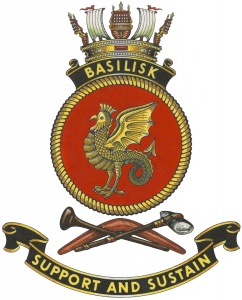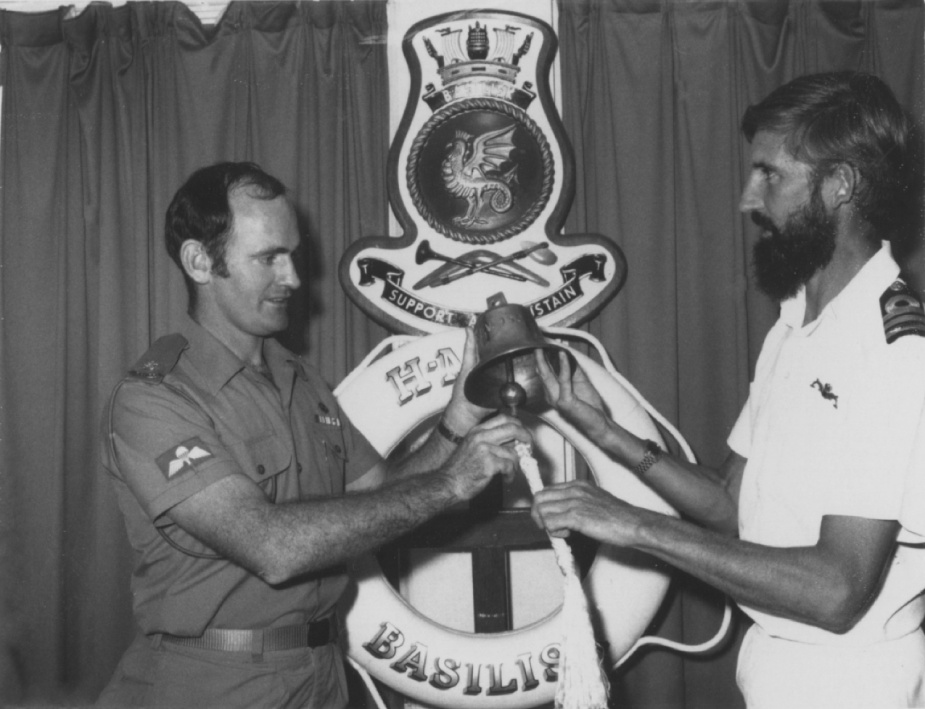HMAS Basilisk
HMAS Basilisk was a Royal Australian Navy (RAN) depot base in Port Moresby, first Commissioned on 1 January 1943.
The initial basis for all Allied forces and strategy in the war with Japan was the American-British-Dutch-Australian Command (ABDACOM), established at the Arcadia Conference in Washington (22 December 1941-14 January 1942). The main objective of ABDACOM and Allied strategy in Southeast Asia was to maintain control of a defensive line that ran down the Malaya Peninsular and the southernmost islands of the Netherlands East Indies (NEI) in order to retain Allied control of the Indian Ocean. In the wake of Japan’s rapid victories, the Allies were forced to retreat.
In March 1942, the Pacific theatre became a US strategic responsibility and ABDACOM was replaced by the South-West Pacific Area (SWPA), which encompassed Australia, New Guinea, Papua, the Philippines, the western part of the Solomon Islands and most of the NEI. With Singapore, Malaya, the NEI and the Philippines lost to Japan, the Allies soon sought to establish new strategic bases in the SWPA.[1]
Consequently, Port Moresby was chosen as the site for a new RAN establishment that was commissioned as HMAS Basilisk in the wake of the Battle of Milne Bay and Japan’s failed amphibious assault on Port-Moresby.[2] Moresby would prove central as a supply and staging area for equipment, stores and personnel essential to supporting the Allied campaign against the Japanese in New Guinea.[3] The name Basilisk was chosen to commemorate HMS Basilisk, the paddle-steamer commanded by Captain John Moresby, RN, when he surveyed and named the harbour Port Moresby in 1873.[4]
Commander RBA Hunt, OBE, RAN, was appointed the first Commanding Officer of the new establishment. Having previously completed a hydrographic survey of the northern approaches to Australia and Port Moresby, Hunt had a sound knowledge of the area.[5]
Because of its strategic significance, preparations for harbour defence measures at Port Moresby began before the formal commissioning of Basilisk. In September 1940, the War Cabinet approved a naval mining policy to provide for defensive minefields in preparation for the possibility of Japan entering the war. The following month, the coastal cargo ship Bungaree (Commissioned HMAS Bungaree, 9 June 1941) was requisitioned as the RAN’s sole minelayer. In August 1941, Bungaree began minelaying off Pyramid Point and Bootless Inlet just south of Port Moresby, and off Lolorua Island to the South West.[6] The following month, equipment was requested for the laying of submarine indicator loops at Port Moresby. The loops were not laid until May 1943 - delayed by a lack of available of material and questions concerning the practicality of the loops in defending Port Moresby. Eventually the work was undertaken and loops were laid in the entrance to Port Moresby Harbour, known as Basilisk Passage.[7]
Basilisk’s first significant undertaking involved providing support to Operation LILLIPUT. Following victory at Milne Bay, the Allies went on the offensive, making preparations for the US and Australian armies to capture the Buna-Gona area. This involved the transportation of troops, weapons and supplies between Milne Bay and Oro Bay. In a series of convoys over December 1942-June 1943, ships were loaded in Australia, before sailing north to Port Moresby, Milne Bay and finally across to Oro Bay. The LILLIPUT ships, as they were known, were almost exclusively made up of merchant vessels from the Dutch shipping company Koninklijke Paketvaart-Maatschappij (KPM). LILLIPUT came with considerable danger and RAN ships - mostly corvettes - shouldered much of the responsibility for convoy escort duties. Even so, the operation was not without losses. In March and April 1943, the KPM ships SS s’Jacob and Van Heemskirk were attacked by Japanese bombers and sunk in Oro Bay. Several other naval and merchant ships were also seriously damaged over the course of Operation LILLIPUT. When the operation concluded, 60,000 tons of supplies and more than 3800 troops had been delivered.[8]
With Basilisk operating as an important staging point in the New Guinea campaign, the establishment saw a flurry of activity providing victualing and refuelling services to the LILLIPUT ships, as well as to the RAN ships providing escort and search and rescue coverage. An indication of the operational tempo of Basilisk during the first three months following its commissioning is evidenced by the 150 merchant vessels and 76 Allied warships that made use of its facilities and services.[9] The heavy demand for fuel for troop, cargo and escort vessels was met by the instillation of additional fuel storage facilities, with a capacity of up to 12,000 tons furnace oil, 5000 tons diesel oil and 5000 tons distillate. Two existing slipways were extended and a naval repair workshop constructed nearby.[10]







